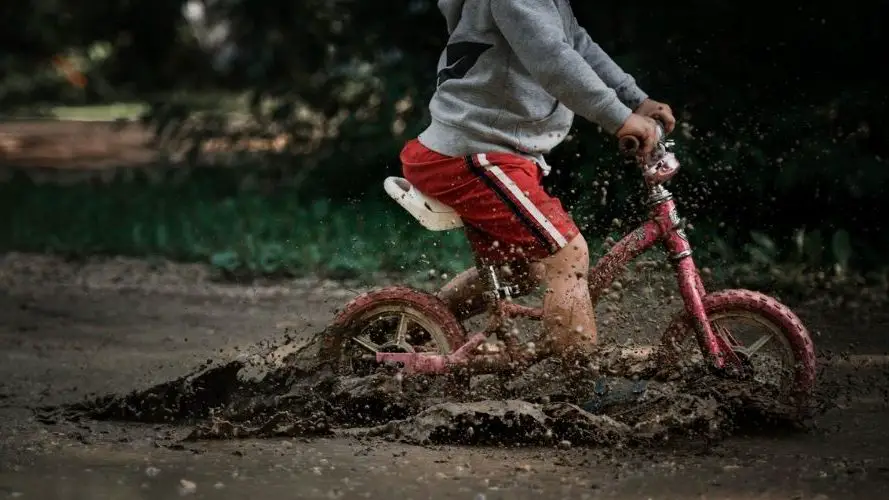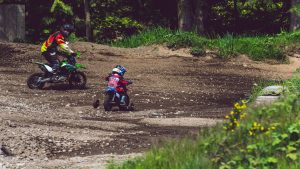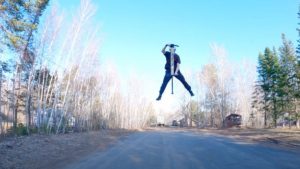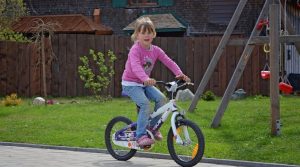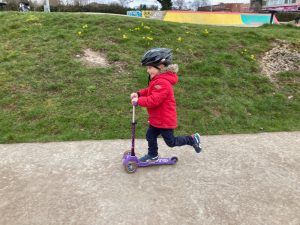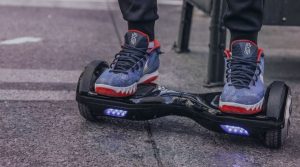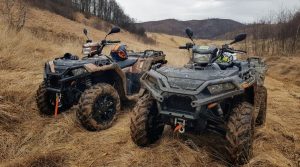Here’s the thing. I’m not here to tell you that balance bikes are a modern parenting miracle, and tricycles are dated, awful, and may very well ruin your child’s chances of transitioning smoothly to a two-wheeler.
Your child will learn how to ride a two-wheeler, in their own time, no matter what first bike you choose for them. Both options will get you there, and it’s unnecessary to guilt you into thinking otherwise.
I am here to tell you how balance bikes compare to tricycles and what many experts today recommend, so you can decide for yourself if you’re going traditional or trying something new.
6 reasons to check out a balance bike
The general premise of a balance bike is that it teaches children how to balance, and they use their feet to push forward, glide, and stop themselves.
Without having to worry about extra wheels or pedals, they can focus on the most crucial part of learning how to ride a bike: balance. Let’s dive into how this can help them become a more confident, capable rider.
1. Balance bikes are lightweight
Balance bikes are significantly more lightweight than tricycles and bikes with training wheels. They do not have pedals, gears, or a chain. Some come with hand brakes while others do not have any brakes (either will do).
For reference, if a balance bike is the right size for your child, it will be about 25-30% of their weight. The light composition of a balance bike makes it easy to ride, glide, and maintain balance, while kids tend to get tired out quickly trying to pedal a heavier tricycle.
This is good news for you because when you inevitably get stuck carrying the bike, it won’t be heavy.
2. Go longer distances
Think about it- will your toddler be able to go longer running and walking on a balance bike or attempting to pedal on a tricycle?
Balance bikes are (for most kids) easier to learn how to ride because to use them they simply have to walk or run. In fact, some occupational therapists use them as a rehabilitation tool for children with disabilities or injuries. 1The Benefits of Balance Bikes
intermountainhealthcare.org
This means less frustration, longer bike rides, and an early love of bike riding. They learn how to propel forward, stop themselves, and steer the handlebars, often without much formal “teaching” or prompting.
3. Speed up and simplify the process
It used to be that you started with a tricycle, then introduced training wheels, and then took the training wheels off and learned how to ride a two-wheeler. By choosing a balance bike, you can streamline the process and bypass both tricycles and training wheels.
Once they outgrow the balance bike, learning how to pedal while they already have balancing down will be much easier. If you’ve ever watched a toddler try to pedal, you understand why that’s a skill better left for a child that’s a little older. Parent after parent has been impressed with their surprisingly young child jumping on a two-wheeler without even having to be taught.
Not only do balance bikes make the process of learning to ride a bike faster, but they also simplify it. It makes more intuitive sense, resulting in a smoother transition all around.
4. Safety
Kids, especially toddlers, have a knack for hurting themselves and can fall off of just about anything. So yes, injuries and falls are a possibility no matter what bike you choose.
However, because balance bikes have a lower center of gravity and feet remain on the ground at all times, there are some advantages. Kids can typically catch themselves before falling and if they don’t, the distance to the ground is fairly short.
As mentioned above, tricycles are also much heavier. Your child’s feet will be resting on the pedals which means if they tip over, they may end up temporarily trapped underneath the tricycle.
An added bonus is that balance bikes with air-inflated tires (which we recommend) move safely and smoothly over uneven surfaces, including sidewalks, dirt, gravel, and grass. You’ll want to stick to the pavement with a tricycle.
5. Teach balance, coordination, and independence
While we know that balance bikes teach balance, other benefits include coordination, independent riding, confidence, and leg musculature. All of this helps kids in their transition to a two-wheeler, especially because steering a balance bike is just like steering a two-wheeler, which is not the case with a tricycle.
Oftentimes, the extra wheels on a child’s first bike are a crutch. They learn to rely completely on them and never have to worry about balancing at all. They also usually need to be pushed which is why many tricycles come with a push handle. On a balance bike, they learn how to properly balance, steer, and ride on their own.
6. Highly recommended by happy parents and industry experts
There’s no shortage of blog posts and reviews from happy parents touting the positive effects of balance bikes. Many parents swear by the power of the balance bike, amazed that their toddlers transitioned seamlessly to a two-wheeler later on.
While firsthand experience is awesome and maybe even equally valuable, what do the oft-referenced “experts” say? More and more bike experts and enthusiasts have endorsed balance bikes because they believe that tricycles and bikes with training wheels are counterintuitive to the process of learning how to efficiently ride a bike.
As we know, they do not teach balance but instead teach children how to pedal, wobble back and forth from wheel to wheel, or, in the case of a tricycle- simply sit.
While learning to pedal is great, experts like John Bradley (former editor-in-chief of VeloNews, a cycling magazine) and David Gordon Wilson (MIT engineering professor and author of Bicycling Science) believe that the common sense order is to learn balance, then brakes, then pedals.2The Best Balance Bike
nytimes.com
Related: How to Teach Your Child to Ride a Balance Bike: A Simple Guide
But I really wanted to buy that cute tricycle…
Keep in mind that we’re certainly not implying that tricycles are bad. In fact, it may very well be the better choice for your child. Some kids will appreciate the stability of having two back wheels, find them more fun, or just like having pedals like mom and dad.
If you have the opportunity to buy or receive them secondhand, you could always try both. With a tricycle, your child will have the chance to learn how to pedal on a sturdy base, build endurance, and develop motor skills climbing on and off the tricycle.
Over the course of having four children, we have purchased or been given a tricycle, a balance bike, and bikes with training wheels. My toddler currently prefers the balance bike for keeping up with his older siblings, but we all know that could change at the drop of a hat.
Balance bike tips!
- Remember to always have your child wear a properly fitted helmet.
- If you do choose a balance bike, it’s important to choose the right size to get the most bang for your buck. Measure your child’s inseam by placing the spine of a book near their crotch, and measuring from the spine of the book to the floor. Choose a bike with a seat height that is about 0.5” shorter than your child’s inseam.
- Balance bikes are great for kids as young as 18 months and as old as 6.
- Some balance bikes come with hand brakes, which are another great learning tool for kids.
- Not sure which balance bike to choose? Check out our updated list for our current faves.
Related: A Comprehensive Guide to Choosing a Balance Bike
Wrapping up
No matter which one you choose for your child’s first bike, you can feel good about the fact that you’re getting them outside for some healthy movement, teaching coordination, and spending quality time together. (Oh, they’re screaming that they want to go inside? IT STILL COUNTS!)
A child’s first bike is an exciting rite of passage, so grab a helmet and enjoy!


